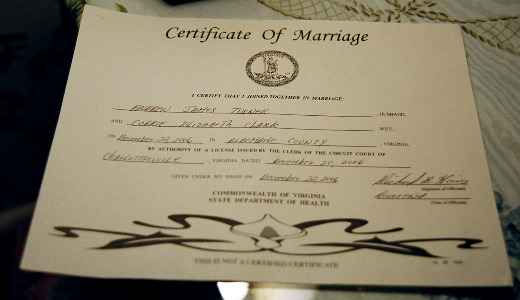
WASHINGTON (PAI) – Policies on whether, and how, to aid the nation’s families have gotten caught in the poisonous political partisanship permeating the country, said speakers at a panel held July 7 on the future of families.
And not only that, they pointed out, advocates of “family values” – code words for conservative positions on issues such as abortion, sex education, prayer in the schools and gay marriage – demographically are not practicing what they’re preaching. And that causes a cultural disconnect, the speakers said.
The discussion of “the future of the American family,” convened by a liberal-leaning think tank, the New America Foundation, produced some contrasting statistics, even before the speakers took a swing at what they mean:
* Of women born in 1950, half married by age 23. Of women born in 1957, only 29 percent married by age 23. That shows the changing attitudes actually started in the late 1950s, with the succeeding decades first building (1960s-1970s) and then reacting (1980s) to that development.
Later ages of marriage also led to delayed child-bearing, and smaller families, the speakers said. The percentage of women who told pollsters they wanted at least three children crashed by 1973, one panelist noted.
* Opportunities for women widened. In 1950, women accounted for 1 percent of all students in professional schools (law, medicine, engineering, etc.). By 1980, it was 30 percent. Now the percentage is even higher. And women are now half the workforce.
* By 1950, some 30 percent of brides were pregnant as they approached the altar, a figure that has declined since. That 30 percent figure equaled the previous peak, in 1840. The low was 10 percent, just before the Civil War.
* The divorce rate hit a peak in the 1980s, but by the late 1990s it had dropped to 1965 levels. But there’s a split within that, added one speaker, University of Missouri-Kansas City law professor June Carbone: “For non-college-educated women, the divorce rate keeps going up.”
* The “red states” saw the greatest traditional reaction against the liberation of women in the 1960s and 1970s. But those same “red states,” and even “red” areas in “blue states,” have higher divorce rates, less family stability and more early births.
All this has implications for families and family policy, the speakers said. And that’s where the red-state/blue-state attitude divide really hits home, sometimes literally.
“The claim is that ‘red state’ people have a set of values and ‘blue state’ people have none,” Carbone said. “But we’re talking about systems, classified by values and beliefs,” she added. Values sometimes don’t match what’s happening on the ground.
Another big change is economic. As all the panelists – including Patrick Fagan, a retired clinical psychologist representing the right-wing so-called Family Research Council – admitted, women now work not because they want to, but because they must.
But family policy hasn’t kept up with that change, the panelists said.
“The strains on families were there even before the recession hit,” said Eyal Press of the New America Foundation. “We tolerate levels of wealth inequality that others don’t, and it has gone up over the last 30 years.
“We do not have a society in which only one member of a couple in their 30s works. Now both work two jobs, or sometimes three. If we live in that world, what is the alternative?” he asked. “Live in a world that doesn’t exist, or adjust the workplace to the world that does?”
But workplaces have not adjusted to the changing nature of families, he continued, and workplace discrimination against parents – especially women – exceeds 50 percent of all work discrimination lawsuits, he said. “An increasing number win their cases” when they sue employers over the practice, “more so than in other discrimination cases,” he added.
But case-by-case decisions will not construct an overall family-friendly policy, Press noted. “There are other ways to address this than lawsuits. For example, Sweden gives workers, of both sexes, 16 months of paid family leave, and England gives 15 weeks. We give only unpaid leave and it’s not available in small businesses.”
George Washington University law professor Naomi Cahn noted there are efforts in Congress to expand family and medical leave and to legislate some paid family leave. Those measures, however, are marooned in the logjam of legislation on Capitol Hill and have yet to get out of the Democratic-run relevant committees.
Other panelists noted sex education – which they would rename family education – has had an impact, but primarily on the college-educated. As one panelist ironically pointed out, a survey of female first-year college students showed the highest exposure to abstinence-only sex education, a radical right favorite, was among women attending Harvard, who also had the highest virginity rate upon entering college.
Photo: http://www.flickr.com/photos/ajturner/1019246442/ cc 2.0










